Jan 23, 2019
Lower Back Pain Due to Sports - Myths and Solutions
Despite a growing abundance of good resources related to injury prevention, sports injury rehab, and proper movement, there are still far too many well-accepted myths related to sports injury recovery. These myths often give physical therapy patients unreasonable expectations about their recoveries, and they may even lead some people to make matters worse. To help uncover the truth, we’ve compiled some of the most common rehab myths for you.
There is a standard "cure" for most causes of back and neck pain.
Compared to other medical conditions, there are relatively few standardized approaches to diagnosis and treatment of back problems. Spine specialists from various areas of expertise (such as physical medicine and rehabilitation, chiropractic, osteopathic medicine, physical therapy, and surgery) will often disagree on the diagnosis and most appropriate treatment plan for back pain and back problems, and specialists within a discipline will also frequently have different opinions. A few diagnoses for back pain as a result of back a back problem are relatively straightforward (such as a spinal tumor, infection, or fracture) and there is generally more consensus for diagnosis and treatment of these back problems.
Rest is the key to recovery from back pain and back problems.
The two main reasons bed rest may be recommended for back pain are to reduce pressure on the discs in the spine and to stop the mechanical stresses that are irritating pain receptors. A short period of bed rest may help reduce acute back pain. However, in most instances, more than 1 or 2 days of rest can be detrimental to recovery from back pain, potentially leading to increased pain and other adverse results, such as:
- Muscle atrophy (1% to 1.5% per day)
- Cardiopulmonary deconditioning (15% loss in 10 days)
- Bone mineral loss
- Risk of blood clots
- Loss of wages
- Creating an "illness" mindset.
Adolescents or young adults who experience low back pain do not have to worry about chronic back problems.
Chronic low back pain is one of the highest costs to our medical system today. Poor exercise and lifting habits start early and contribute to movement dysfunction throughout our lives. If low back pain is initiated at a young age, the likelihood of developing a chronic issue into adulthood is very high. Treatment and training for proper body mechanics are important at this stage and should be discussed early on in the course of pain.
You will never get back pain because you are active
Unfortunately, this is not true. Even with exercise, there is no guarantee. Even good sportsmen can suffer from or get occasional back pain. But if you stay in good shape, pain episodes can be less intense and less frequent. If back pain reoccurs constantly, then you should better see a medical professional. Generally, it is recommended to stick to an exercise program, including strength training and stretching for all muscle groups as effective prevention against back pain. See our video library for suitable exercises to strengthen your back muscles, improve posture and reduce back pain.
No pain, no gain!
Training around injuries can be useful and even necessary for competitive athletes. Training through pain, however, isn’t a great idea before an injury — and it’s a horrible idea once a tissue has been damaged. Pain is the body’s warning sign, and pushing through it will lead to dysfunctional motor patterns and possibly even chronic pain that lingers after the injury is healed. A better solution is to help patients distinguish necessary discomfort from harmful pain.
I should always sit up straight, then I'll be fine
No. Sitting straight in your office chair all the time will only lead to one-sided use of your muscle groups. Dynamic sitting, i.e. moving frequently during work, is the right approach to prevent lower back pain. Try this lower back exercise, tailor-made for office workers, to reduce discomfort in the lower back.
Stretching is a cure-all for tight muscles.
Common advice for a tight muscle group is to stretch it harder, more frequently — or both. While stretching can be useful, however, muscles usually get tight because they’re working harder than they should be, or in ways that they shouldn’t be. If improper movement or misaligned bone structures are causing the tightness, then stretching will only serve as a temporary fix — one that likely won’t prevent more serious injuries.
When an area hurts, that area is where your problem is.
Laypeople often think in terms of muscles and body parts — but no structure works in isolation. A non-painful dysfunction in your hip might lead to a postural problem that causes shoulder pain, for example. Treating the shoulder may provide temporary relief, but until you address the hip issue, your shoulder pain will keep flaring up.
Surgery is your only option
Depending on the injury, physical therapy may be just as effective as surgery, if not more so. Full ruptures and fractures require operations, of course, but partial tears and minor degeneration can often heal on their own with a little coaxing from the right modality equipment.
Complete rehabilitation and hands on attention to our patients are the cornerstone building blocks of Agape Physical Therapy. Our physical therapy professionals are completely invested in restoring, improving, and reclaiming your movement to maximize your wellness and performance.
All Rights Reserved | Agape Physical Therapy
All Rights Reserved | Agape Physical Therapy
Made with ♥ by Vessel Digital Marketing
